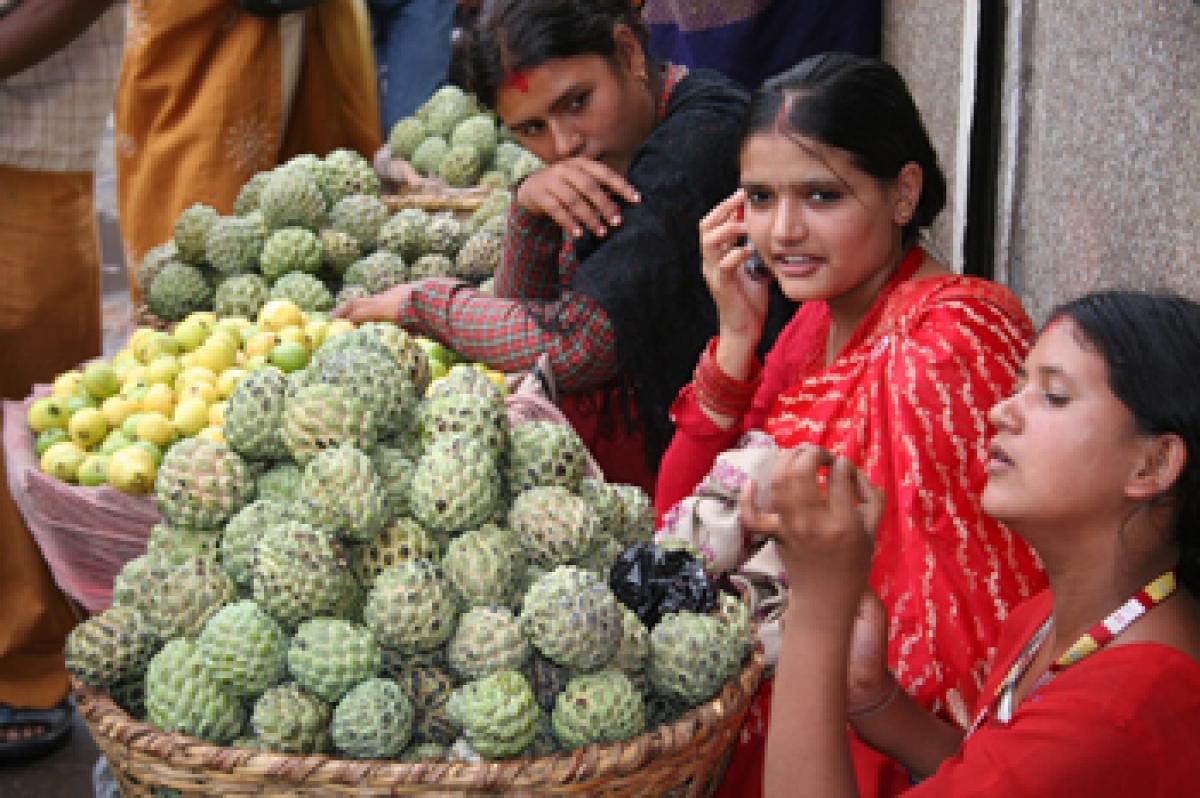Live
- GMR Airports Unveils AI-Powered Digital Twin Platform to Transform Airport Operations
- India poised to become leading maritime player: PM Modi
- Top Causes of Kidney Stones and How to Recognize Silent Symptoms
- India’s renewable energy capacity logs 14.2 pc growth at 213.7 GW
- Winter Session of Odisha Assembly adjourned sine die
- Biden calls Trump's tariff approach 'major mistake'
- After Drama Over Eknath Shinde’s Chief Minister Race, Maharashtra Cabinet Formation Faces New Tensions
- Egyptian FM, Blinken discuss recent developments in Syria
- Iran's supreme leader says Syria's developments result of US-Israeli 'plot'
- Elon Musk to Purchase $100 Million Luxury Mansion Next to Donald Trump's Mar-a-Lago, Report Reveals
Just In

Recent indications that India\'s Internet use is low and not reflected in the numbers of mobile phone connections and growth are buttressed by a new study that points to digital inequality in urban areas.
Recent indications that India's Internet use is low and not reflected in the numbers of mobile phone connections and growth are buttressed by a new study that points to digital inequality in urban areas. Carried out in Pune, a rapidly growing metropolis of 5.92 million people, its economy driven in large part by information technology, the study found that: 82% of people surveyed in low-income neighbourhoods don't use Internet; 56% of households have no Internet users at all; 41% of non-users have never heard of the Internet; 43% of people between 16-25 years of age do not use Internet.
The results are likely to be similar in more prosperous cities, such as Bengaluru and Delhi, worse in poorer cities. Although Internet users in India are increasing rapidly, and the country is Asia-Pacific's fastest growing smartphone market, only 22% of the adult population in India uses the Internet, compared to the global median of 67%, according to this survey by Pew Research Center, a US research institute. India lags behind most major economies and performs worse than Nigeria, Kenya, Ghana and Indonesia, among other countries, the data reveals.
Yet, in absolute numbers, India likely overtook the US and became the country with the world's second-largest Internet market, with 402 million active Internet users in December 2015. These figures clearly hide great variations, the Pune study revealed. The study, "Towards Digital Inclusion: Barriers to Internet Access for Economically and Socially Excluded Communities", conducted in low-income and socially excluded neighbourhoods by the Centre for Communication and Development Studies (CCDS), a Pune non-profit organisation, provides rare empirical evidence of digital inequality. Pune has grown rapidly over the last two decades to become the eighth-largest urban agglomeration in India. In 2015, Pune ranked second only to Bengaluru in software exports from India.
There are several stereotypical beliefs that augment this gender digital inequality, according to the CCDS study. For instance: It is primarily men in the household who acquire smartphones, while women are handed down older, basic phones without data access, or feature phones that allow only limited Internet applications. Parents believe that girls don't need mobiles, since they stay at home more than boys. There is also a widespread feeling that mobiles made available to women will lead to unwanted romantic liaisons and "exploitation".
Boosting Internet access for women has the potential to boost their participation in the labour force, according to this Mckinsey study. Recently, several villages in Gujarat banned mobile phones for girls and single women, a confirmation of widespread patriarchal norms hindering gender equality. Better education increases chances of Internet access. As many as 56% of households with at least one member with a class 10 education or enrolled currently were "connected", meaning at least one Internet user, as compared to 14% of households without anyone with similar education.
The number of non-Internet users decreases with increasing education levels. Having a smartphone increases chances of Internet use. As many as 77% of households with a smartphone accessed the Internet, compared to 30% in households without a smartphone. Only 17% of Indian adults own a smartphone, according to the survey by Pew Research. Only 7% of adults in low-income families own a smartphone; the figure for wealthier families is 22 percent.

© 2024 Hyderabad Media House Limited/The Hans India. All rights reserved. Powered by hocalwire.com







